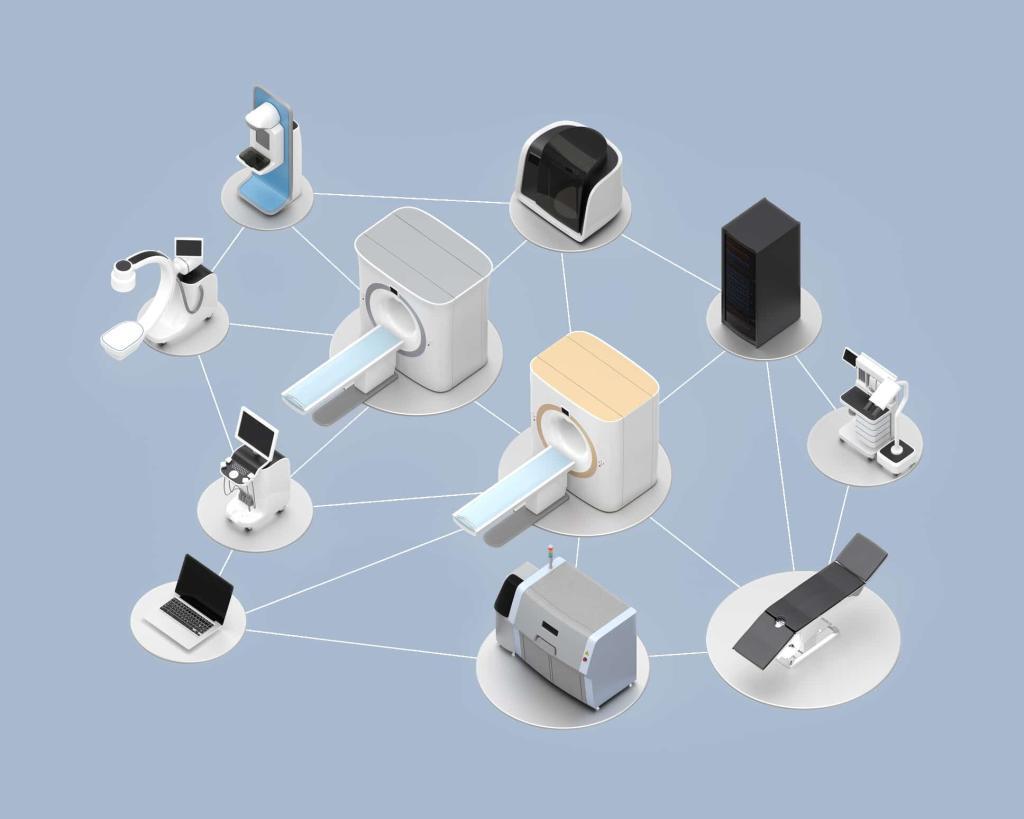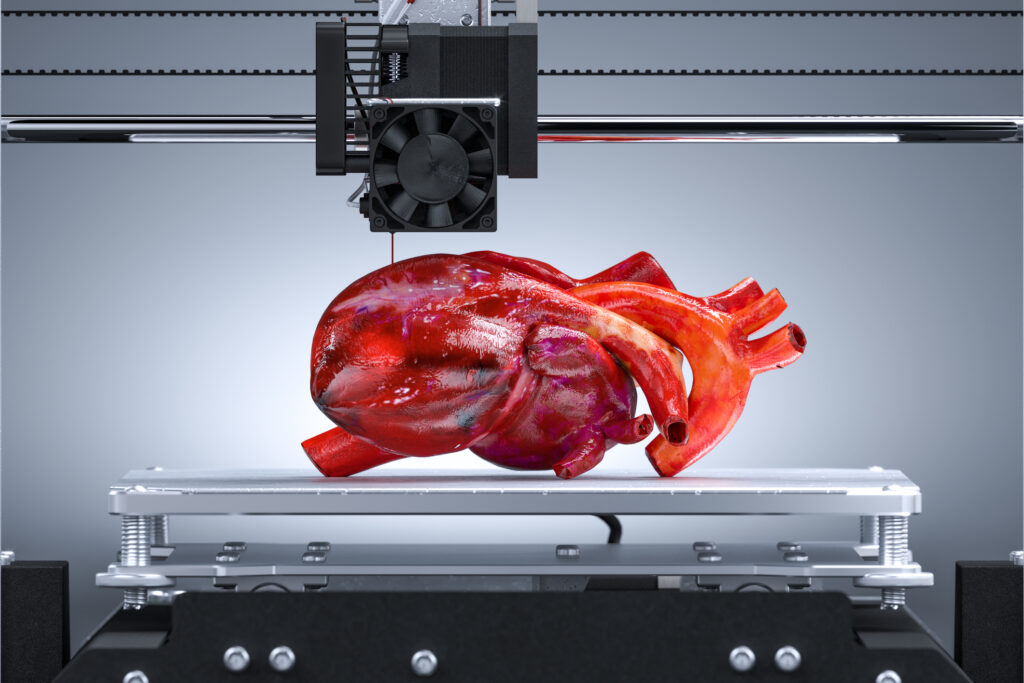Predicting how a new compound will behave in the human body is still one of the hardest parts of drug development. Classical ADME studies rely on a patchwork of static in vitro assays, animal models that approximate human biology only, and mathematical models that try to glue everything together. In the last few years, however, a different approach has moved from “interesting prototype” to a realistic option for project teams: human-on-a-chip systems built from interconnected micro-organs.
These microphysiological systems (MPS) use perfused 3D human tissues linked by microfluidic channels carrying a blood-like medium. In their simplest form, they host a single organ, such as the liver; in more advanced designs, multiple organs are connected to mimic whole-body pharmacokinetics. Recent work has made these platforms much more relevant for real-world ADME, and regulatory changes are now giving them serious momentum.
From organ-on-a-chip to human-on-a-chip
Early organ-on-a-chip devices showed that it was possible to maintain tissue-like function in tiny, perfused chambers. Liver-on-a-chip platforms, for example, can sustain human hepatocytes and non-parenchymal cells for weeks, with maintained CYP activity and realistic drug metabolism.
The real change for ADME, though, comes with multi-organ arrangements. Recent reviews in 2024 and 2025 highlight dual- and multi-organ chips that link intestines, lungs, or skin to the liver, and sometimes onward to the kidney and other tissues, with flows tuned to approximate physiological blood distribution.
One of the most striking demonstrations is an eighteen-organ microphysiological system reported in Microsystems & Nanoengineering in 2025. The authors combined miniaturised tissues representing 18 different organs with an engineered vascular network and a dedicated excretion module, then dosed carboplatin and followed its distribution and clearance over time. They could reproduce classical two-compartment pharmacokinetics and generate tissue concentration-time curves that agreed well with in vivo data.
That particular device used rat microtissues, but the architecture – multiple organs, shared circulation, active excretory function and repeated sampling – is exactly where human-based systems are heading. Reviews of organoid- and organ-on-a-chip technologies suggest that multi-organ human constructs for ADME and safety assessment will continue to grow in complexity and scale over the next few years.
What human-on-a-chip means for ADME
The appeal of human-on-a-chip platforms for ADME studies is that they can capture multiple processes simultaneously rather than in isolation. Recent dual- and multi-organ designs explicitly target each letter in ADME.
Absorption
Modern systems aim to mimic route-specific absorption and first-pass effects. Gut–liver chips, for instance, include a polarised intestinal barrier exposed to luminal dosing, connected to a liver compartment via microfluidic circulation. CN Bio’s human gut–liver microphysiological system is designed to emulate drug passage through the intestinal wall into the portal circulation, followed by hepatic extraction, making it suitable for estimating oral bioavailability and organ–organ crosstalk.
Similarly, lung–liver and skin–liver configurations are being used to explore pulmonary and transdermal delivery. A recent lab-on-a-chip review from 2025 describes how these dual-organ systems can model absorption across airway or skin barriers and integrate downstream metabolism in the same experiment, rather than requiring separate studies stitched together afterwards.
Metabolism
Liver-on-a-chip devices are now highly optimised for drug metabolism research. The PhysioMimix platform, for example, uses perfused 3D human liver microtissues cultured on cyclic olefin copolymer plates, reducing small-molecule adsorption and improving the recovery of parent and metabolites.
These long-lived cultures allow chronic dosing, washout periods, and investigation of time-dependent inhibition, induction and slow-forming metabolites – areas where traditional short-term hepatocyte assays can struggle. Recent commentaries in Frontiers in Pharmacology and other journals emphasise that these constructs are approaching the point where they can support quantitative prediction of clinical pharmacokinetics, rather than serving purely qualitative mechanistic roles.
Crucially, liver chips are also being positioned as tools for predicting drug-induced liver injury (DILI). In September 2024, the US FDA’s ISTAND pilot programme accepted the first organ-on-a-chip submission—a human Liver-Chip intended to predict certain forms of DILI—into its qualification pathway for novel drug development tools.
Distribution
Multi-organ systems enable researchers to go beyond single-tissue readouts. In the 18-organ MPS study mentioned earlier, the authors measured carboplatin concentrations across many tissues over time, creating a miniature analogue of a whole-body distribution study with serial sampling.
This is extremely appealing for PK/PD studies where the link between tissue exposure and pharmacology or toxicity matters more than plasma levels alone. Future systems that integrate tumour, immune organs and barrier tissues could help resolve questions about target engagement and off-target effects early in development.
Excretion
Renal function is essential for drug clearance and for assessing accumulation risk, and recent designs have begun to integrate kidney-on-a-chip modules and dedicated excretion circuits. The eighteen-organ system includes an excretion subsystem that supports dynamic clearance and can be tuned to match particular elimination half-lives.
Although kidney-on-a-chip technology is slightly less mature than liver models, recent reviews of microphysiological systems highlight progress in recreating glomerular filtration, tubular secretion, and reabsorption – all of which feed into mechanistic renal clearance models.
From niche tools to commercial ADME platforms
A decade ago, organ-on-a-chip studies were mainly found in academic labs. Today, several companies offer off-the-shelf systems aimed directly at ADME and safety questions, and large pharma companies are using them across discovery and early development.
CN Bio’s PhysioMimix range provides single- and multi-organ chips specifically marketed for ADME, including liver and gut–liver models for drug metabolism, bioavailability and DILI risk assessment. The company emphasises long-term culture (up to four weeks), human-only cells and materials that minimise non-specific binding – all critical for quantitative work.
At the same time, platforms such as TissUse’s HUMIMIC have been used extensively to explore multi-organ crosstalk. A 2025 review summarises how HUMIMIC systems have supported studies ranging from liver–fat interactions to combination toxicity, demonstrating how multi-organ data can inform PK/PD models and systems toxicology.
This shift from bespoke devices to validated products is important for adoption. Project teams do not want to build microfluidic hardware from scratch; they want something that fits into existing workflows, produces standardised outputs, and can be interpreted alongside conventional ADME assays and PBPK modelling.
Digital twins, AI and personalised ADME
One of the most interesting trends is the coupling of human-on-a-chip experiments with in silico models. Rather than treating chips as standalone assays, researchers are increasingly using them as data generators for digital twins of drug behaviour.
Recent reviews outline how microphysiological data can be plugged into physiologically based pharmacokinetic (PBPK) models to refine parameters such as tissue partitioning, intrinsic clearance and permeability. More forward-looking work combines multi-organ chips with “digital twins” of specific patient groups (for example, pregnant women or individuals with metabolic disease) to explore how physiology alters exposure without ever dosing an animal or a volunteer.
Artificial intelligence is creeping into this picture as well. Analyses from 2025 describe how AI is being used to integrate high-dimensional chip readouts (multi-omics, imaging, functional endpoints) and to derive PK/PD parameters more efficiently. In parallel, there has been a surge in AI-driven drug discovery and ADME prediction, a trend that aligns with regulatory encouragement to adopt non-animal methods.
Another branch of work fuses patient-derived organoids with microfluidic platforms. By growing tissues from specific donors – for instance, people with cholestatic liver disease – and placing them on-chip, researchers can probe how pathological phenotypes modify clearance and toxicity. This opens up the possibility of personalised ADME assessments in the longer term, although it remains largely experimental for now.
Regulatory tailwinds: NAMs, ISTAND and animal-testing phase-out
For human-on-a-chip to matter in drug development, regulators must recognise the data they generate. Here, the last 18–24 months have brought real movement.
The US FDA’s ISTAND programme was created to qualify novel drug development tools that fall outside its traditional pathways. In 2024, the agency accepted the first Liver-Chip into ISTAND as a candidate tool for predicting DILI risk, signalling that complex in vitro models are now on the regulatory radar.
In April 2025, the FDA went further and announced a long-term plan to phase out animal testing requirements for monoclonal antibodies and, over time, other drugs, in favour of New Approach Methodologies (NAMs). These NAMs explicitly include organ-on-a-chip platforms, human organoids and AI-driven toxicity models.
The UK has now announced a national strategy to accelerate the replacement of animal tests when validated alternatives exist, again highlighting organ-on-a-chip and related technologies as part of the solution. The government’s roadmap, unveiled in November 2025, commits funding and regulatory support to bring human-based methods into mainstream use over the next few years.
These policies do not make animal experiments vanish overnight, but they tilt the playing field. Suppose regulators are prepared to consider human-relevant microphysiological data in IND packages and other submissions. In that case, sponsors have a strong incentive to invest in human-on-a-chip approaches for ADME and safety questions.
What can you realistically do with human-on-a-chip today?
Given this activity, where does the technology sit in a typical drug discovery or development programme right now?
First, multi-organ systems are not replacements for all in vitro and in vivo work. Current devices usually represent a subset of organs – commonly gut–liver or lung–liver, sometimes extended to kidney and a few additional tissues – and they still have technical constraints around scale, protein binding and throughput.
However, there are clear niches where they are already useful:
- Early screening of human-relevant intrinsic clearance, metabolite profiles and DILI risk using liver-on-a-chip instead of (or alongside) short-term hepatocyte incubations.
- Estimating oral bioavailability and first-pass extraction by combining gut- and liver-on-a-chip readouts with PBPK modelling, particularly for compounds where permeability or metabolism is borderline.
- Exploring route-specific delivery (oral vs pulmonary vs transdermal) by comparing multi-organ chip data across intestine, lung and skin modules connected to a shared liver compartment.
- Generating rich time-course datasets for distribution and multi-organ toxicity, feeding into mathematical models that would otherwise rely heavily on animal data.
From a practical standpoint, the most productive way to view human-on-a-chip is as a bridge between simple in vitro assays and full-blown PBPK/PKPD modelling. Used thoughtfully, these systems can sharpen predictions of human exposure and safety, reduce the number of animal studies, and provide mechanistic evidence when things do not behave as expected.
Looking ahead
Human-on-a-chip technology is advancing rapidly from concept to a usable tool. Multi-organ systems now capture several layers of ADME in a single experiment; commercial platforms deliver more reproducible data than early, home-built devices; and regulators are actively encouraging the use of non-animal, human-relevant approaches.
The next few years are likely to bring better integration of immune, endocrine and barrier tissues; closer coupling between chips, omics and digital twins; and, if current regulatory signals hold, a steady expansion of contexts in which microphysiological data can carry formal weight.
For ADME scientists, the practical question is no longer “will human-on-a-chip ever work?” but “where in my current workflow can it answer questions faster, more safely, or more human-relevantly than the tools I already use?”
If you share a bit about the types of compounds and routes of administration you’re interested in, I can sketch some human-on-a-chip study designs and typical readouts tailored to your projects.
Disclaimer
This article is provided for general information and educational purposes only. It does not constitute scientific, regulatory, medical, or legal advice, nor should it be relied upon as a substitute for professional guidance. Human-on-a-chip technologies, microphysiological systems, and related methods described here may be subject to ongoing research, development, and regulatory evaluation. Their performance, suitability, and acceptance can vary depending on context, experimental design, and jurisdiction.
Open MedScience does not make any representations or warranties regarding the accuracy, completeness, or current status of the information presented. Readers should independently verify any data, claims, or interpretations and consult qualified experts before making decisions related to research, development, regulatory submissions, or clinical applications.
References to specific companies, platforms, studies, or technologies are for illustrative purposes only and do not imply endorsement. Open MedScience accepts no responsibility for any loss, damage, or consequences arising from the use of, or reliance on, the material discussed in this article.
You are here: home » diagnostic medical imaging blog »



